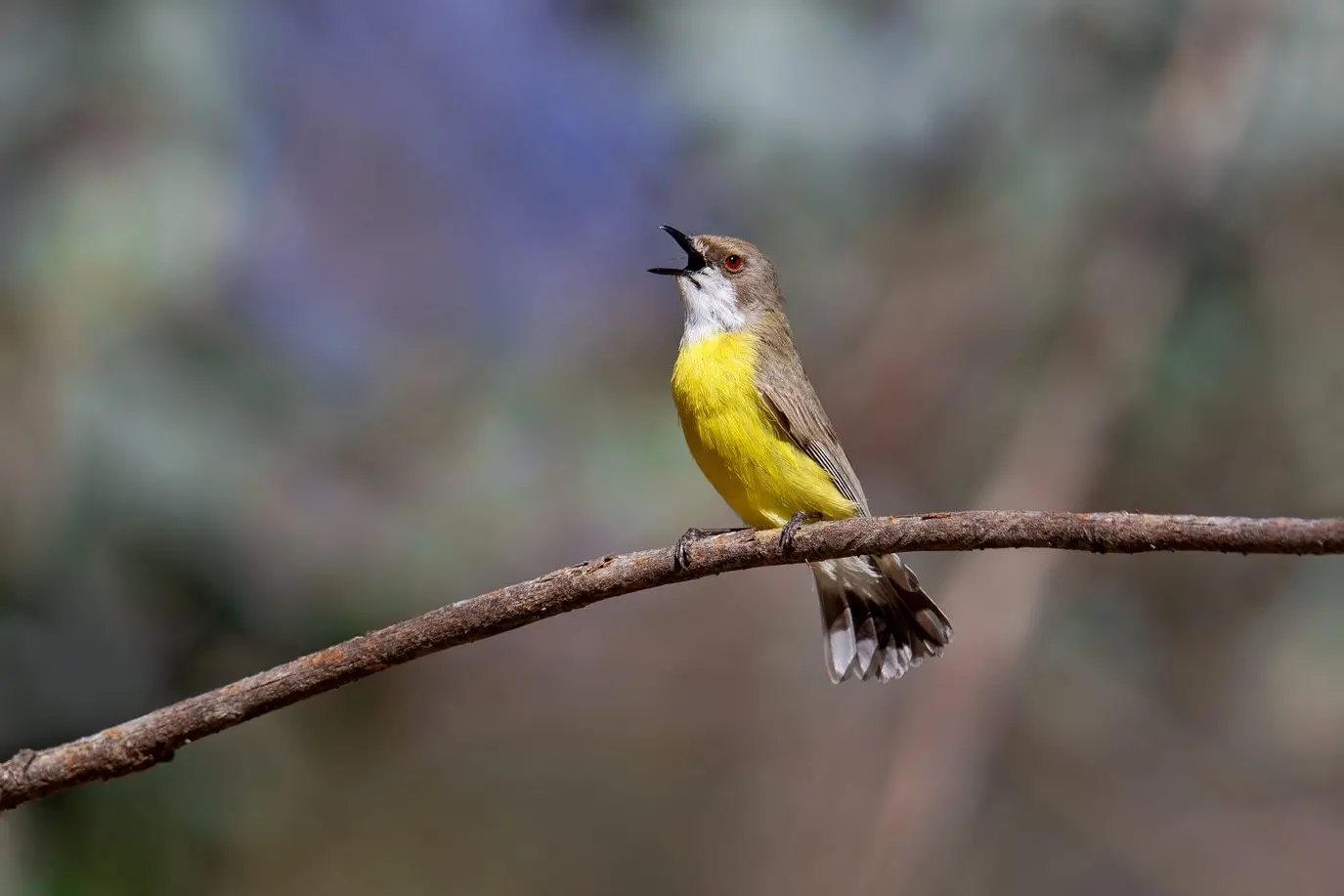PHOTO
The past few weeks have seen the arrival of a number of spring-summer migrants to the region, among them being the White-throated Gerygone.
Like its close relative the Western Gerygone, featured recently in this column, it also has the sweet “falling leaf melody”, but has an upward inflection near the end of the call. This beautiful call has led to it also being known as the Bush or Native Canary.
The White-throated Gerygone is a very small grey-brown bird with a white throat and spot on forehead, distinctive bright yellow underparts, a white-tipped tail, and a red eye. They are most often heard during breeding season, when males particularly sing frequently throughout the day.
When not breeding, they are somewhat quieter and much less conspicuous.
White-throated Gerygones have a broad distribution, from south-eastern Australia through Queensland and across northern Australia to the Kimberley region of Western Australia.
Locally, they are strictly warm weather migrants attracted to our region to breed from as far away as New Guinea and northern Australia.
In Victoria they tend to be most common in the north-east, near the inland foothills and plains with 600mm or more rainfall.
Their preferred habitat is open eucalypt woodland and forest, including red gum communities along rivers and creeks, and stringybark-box-gum woodlands on slopes and ridges.
They feed in the foliage and twigs of eucalypts and tall shrubs, usually high in the canopy, consuming insects.
Unusual in the small bird world, White-throated Gerygones mate for life.
Pairs build an oval or pear-shaped nest, made of bark and grass and delicately bound with spiders' silk.
They hang their nest in the outer foliage of trees, concealed well against potential predators.
Two or three eggs are laid, and the nestlings are fed by both parents.
Locally, the White-throated Gerygone can be found along well-vegetated parts of both the Ovens and King Rivers, and also in many parts of the Warby Ranges, the Lurg hills and the forests around Chiltern and Beechworth.

